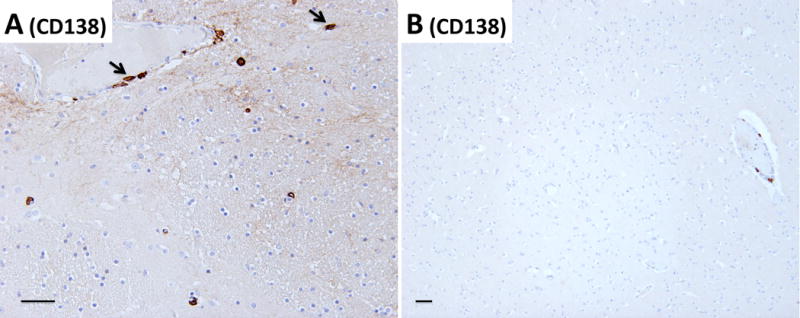Figure 2.

A basal ganglia vessel demonstrating residual perivascular T-lymphocyte cuffing after Rituximab therapy. (A) H&E section, (B) CD3 immunohistochemistry to detect perivascular T-cells, (C) CD20 immunohistochemistry to detect B-cells, and (D) CD68 immunohistochemistry to detect histiocytes. As a control, a thoracic lymph node from the Rituximab-treated NMDAR-AE patient was used to detect the presence of (E) CD3-immunopositive T-cells and (F) CD20-immunopositive B-cells as compared to a lymph node from a patient without Rituximab treatment (G–H). Images A–D are taken at a total of 100× magnification, images E–H are taken at a total magnification of 20×, all scale bars = 50μm.
